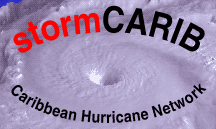
 |
Press Release |
|
|
"New Techniques for Hurricane Season" (Source: AP, 5/31/01) RALEIGH, N.C. - Two years ago, thousands of people sat in traffic jams along the southern Atlantic coast, fleeing a hurricane that wound up not even coming close to their homes. Last year, forecasters predicted a horrendous hurricane season. But when it was over, not a single storm had made landfall in the United States. But the forecasters have a message for doubters: Give us another chance. We're getting better all the time. Weather experts expect some new methods to produce vast improvements this year in tracking hurricanes and predicting their intensity. NASA jets will be dropping measuring devices into storms from above, and flying robotic drones could be measuring hurricanes from below. "It's really a kind of revolutionary time in our field," said Joseph Cione, a hurricane meteorologist at the Atlantic Oceanographic and Meteorological Laboratory in Miami. "This has the potential to really answer a lot of questions." Among the new methods and gadgets the National Weather Service plans to put to use this year is a "coupled model" that studies the ocean as well as the atmosphere to track and measure storms. Researchers now believe warm ocean temperatures feed hurricanes. But as hurricanes spin in place, they cool the waters below them and become weaker. "Until this year, that effect wasn't in our hurricane model," said Morris Bender, research meteorologist at the federal Geophysical Fluid Dynamics Laboratory at Princeton University. "As a result, it caused our model to overpredict how strong storms are going to get." Isaac Ginis, an oceanographer at the University of Rhode Island, pioneered the line of study and said the coupled model should improve intensity predictions by 30 percent. Another important change this year is in the weather service's global analyses. Four times a day, the agency takes information from satellites, weather balloons and other sources, and creates a snapshot of the world's atmosphere. The weather service got approval this month on changes that should help computers use that data to better simulate hurricanes moving across the ocean's surface. Bender said the changes have allowed him to decrease his "track error" by up to 10 percent, or 20 miles. More precise tracking can mean huge savings: Officials estimate it costs an average of $1 million for every mile of U.S. coast evacuated. NASA and the National Oceanographic and Atmospheric Administration both plan to have two planes aloft this season, studying hurricanes top to bottom. Pencil-shaped devices ranging from 1 to 3 feet in length will be dropped into the storms to measure everything from wind velocity and moisture to water temperature and salinity. An Australian company also is seeking permission from the Federal Aviation Administration and Center for Aerial Reconnaissance to fly pilotless robotic planes into this year's storms. The Aerosonde Ltd. drone weighs about 31 pounds and has a wingspan of 9 1/2 feet. It launches from a car's roof rack and can carry 4½-pounds of high-tech measuring equipment. Maurice Gonella, Aerosonde's principal engineer, said the $100,000 drones can be put on autopilot and will constantly relay information and take photographs. "To get an aircraft to fly, say, at 1,000 feet for 24 hours is a huge task, whereas an unmanned drone can do that easily," he said. Hurricane experts are also working on extending their forecasts. The weather service currently makes hurricane projections no more than 72 hours out. The agency is experimenting this year with five-day forecasting, but the results will be kept in-house - for now. "The goal is ... if we do this, and it turns out that we're good at it, that we would make these forecasts public in 2003," said James Franklin, a specialist at the National Hurricane Center in Miami. Dire predictions of a massive storm surge from Hurricane Floyd in 1999 prompted the largest peacetime evacuation in U.S. history. Interstate highways from Florida to North Carolina were locked in what became a regionwide traffic jam. "A lot of people didn't evacuate from places they should, but there were other places where people were leaving from safe areas," said Jay Baker, vice chairman of the National Hurricane Conference. As more and more people build closer and closer to the coast, forecasters hope advancements in their field can keep them ahead of the curve. "It's hard to know any breakthrough," said Colorado State's William Gray, one of the nation's leading hurricane researchers. "But there has been advancement across the board. It's down-and-dirty data that you can work with, and you make progress."
Back to Homepage